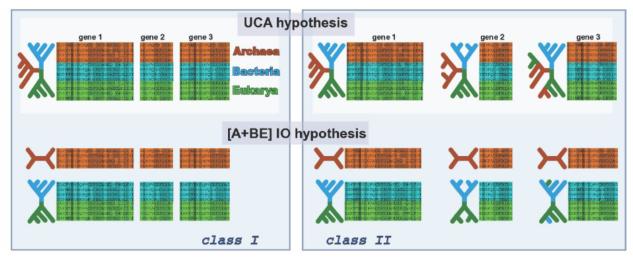Figure 1.
Representation of the Universal Common Ancestry (UCA) and Independent Origins (IO) models, and how to compare them based on alignments. The left panel represents the class I models where all genes are concatenated into one large alignment. On the right we have the class II models where each gene is free to evolve under a distinct phylogenetic history. At the top we have the UCA hypothesis, that claims that all sequences from each gene can be traced back to a common ancestor, while at the bottom we have one example of the IO hypothesis where Bacteria and Eukarya share a common ancestor, which is not shared with Archaea. Other possible IO scenarios are not shown.

